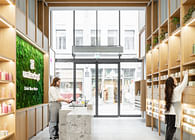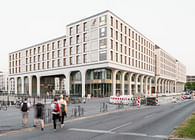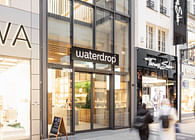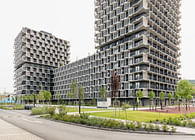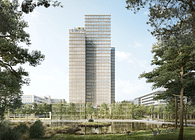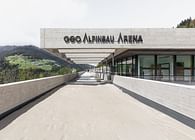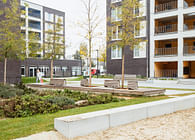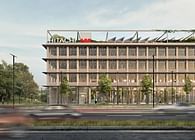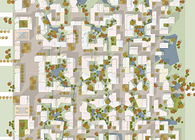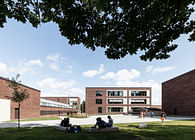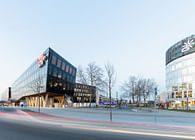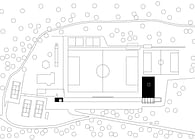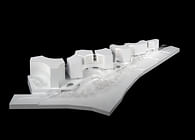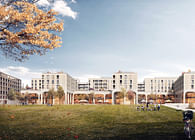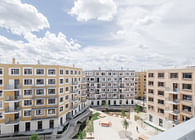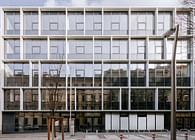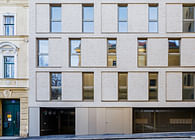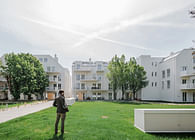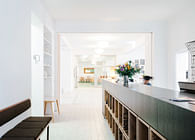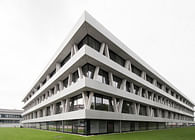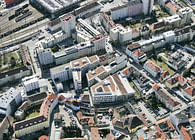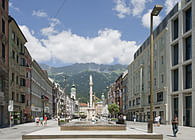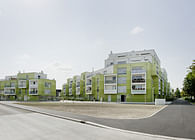
Vienna, AT
Sustainable Office Shelves for the Work World of the Future
The design delivers on the promise of a future of flexible work by
creating an office building as an open-shelf system that offers multiple
versatile green spaces: Expanded work areas on balconies, terraces, or a
garden house not only provide for a perfect setting for collective
activity; the office complex also makes a valuable contribution to the
local microclimate and biodiversity. Guiding ideas such as
resource-saving construction, climate-friendly operation, and
foresighted life-cycle planning are the backbone of a design with an
attitude.
The main structure of the seven-building complex consists of wood, while
the thermal-storage prefab-slab ceilings and the below-grade
substructure are made of lower-emission concrete with slag cement.
Together with the modular construction—individual materials can simply
be removed and reused in the future—the flexibly usable and easily
adaptable rental units make for longevity of the new working
environment.
The façade of the office complex takes up the rational ground-plan grid
and extends the ground-floor garden to the vertical through a
circumferential compartmentalized scaffolding. Sliding doors, unusual
for offices, make it possible to step out on the wraparound balconies
thereby created. Transparent sliding panels in the outermost building
skin make this exterior circulation and communication zone also a
climatic buffer space in the cold season. Closing the panels creates
winter gardens that store solar energy and thus help reduce heating
costs. In summer, the panels are kept open. Projecting balconies provide
direct shading and good daylighting quality without glare.
Between the upper levels, covered footbridges trained with vines (garden
houses) create transition areas with an ecological surplus value.
Simple glass roofs with photovoltaic modules offer weather protection
and generate energy that can be directly used, stored, or fed into the
public grid. Through the use of simple and natural ventilation and
air-conditioning systems and with an optimized building skin, an urban
habitat is established that gives more energy to humans, animals and the
built environment than it takes—for work, for life.
Status: Unbuilt
Location: Stuttgart, DE
Firm Role: Architects
Additional Credits: Team: Cristina Vlascici, Dorotea Malnar, Janek von Zabern, Karolina Pettikova, Philipp Stauss,
Rita Roznar, Valentin Schmid
Landscape architecture: grabner hubber lipp
Visualization: Patricia Bagienski/AllesWirdGut
Illustrations: AllesWirdGut
Modeling: mattweiss
